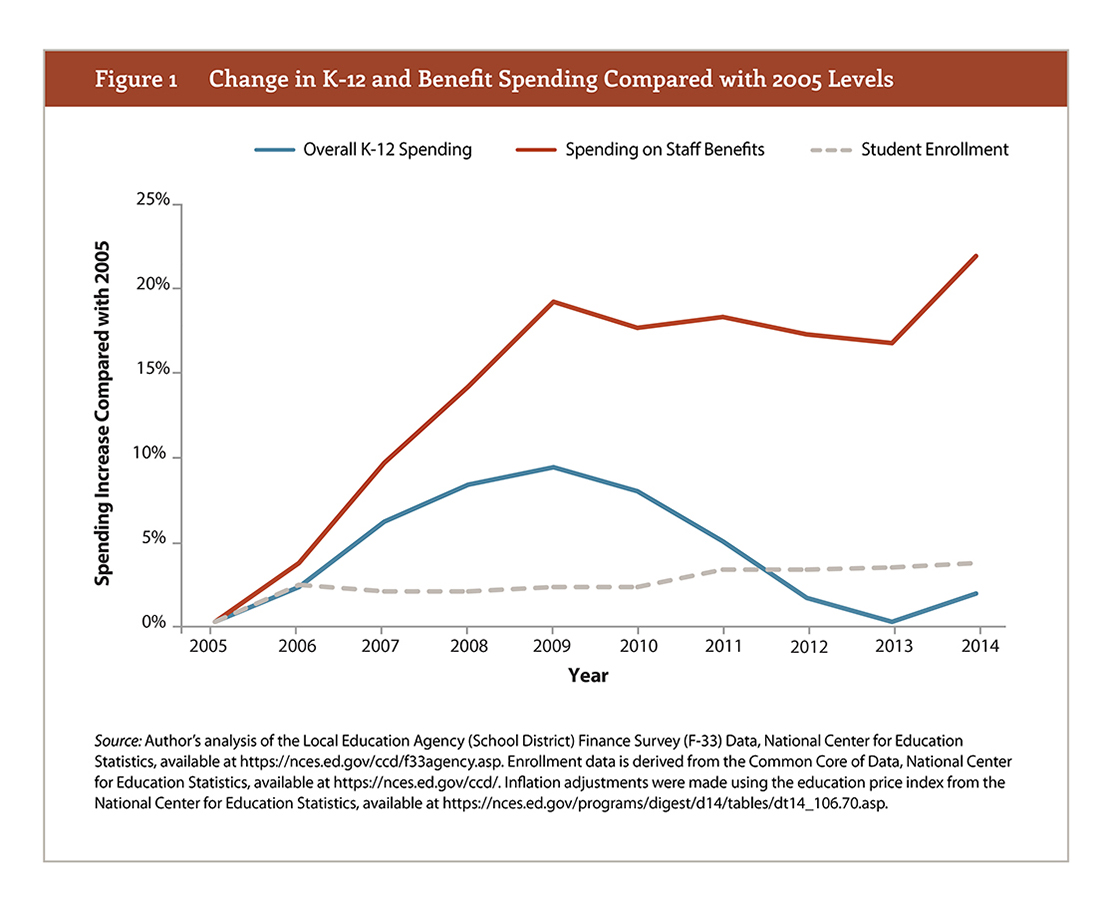
Amidst the strikes and protests about state education funding and teacher pay, the problem of rising benefit costs, such as pensions and healthcare, went largely unnoticed. That’s a mistake because spending on benefits affects how much money gets to the classroom and influences teacher pay.
In a new report, I look into just how much spending on benefits has changed at the district-level between 2005 and 2014. The results are troubling.
As shown in the graph below, a large part of the problem is that benefit costs are rising at a far faster rate than overall K-12 spending. After adjusting for inflation, nationally we spent just 1.6 percent more on K-12 education generally, but benefit spending increased by 22 percent. The net effect is fewer dollars getting to the classroom. Nationally, benefits consume 19 percent of all K-12 spending. That’s a more than 3 percentage point increase since 2005
The trend of benefits eating up a growing share of K-12 budgets is consistent across the country but varies significantly from state-to-state. In West Virginia, for example, 25 percent of K-12 spending goes to benefits. Once changes to states’ overall investment in K-12 education are taken into account, 23 states actually sent fewer dollars to the classroom in 2014 than they did in 2005 after adjusting for inflation. For instance, North Carolina increased its education budget by 2 percent, but its benefit spending rocketed up by 48 percent. As a result, the state actually sends approximately $589 million less into classrooms.
Rising benefit costs is a problem for educators and policymakers alike. For teachers, much of the rising costs go to pay down debts and thus actually don’t correspond with more valuable pensions or better medical benefits. And worse, without similarly rising overall K-12 spending, fewer dollars are actually spent in the classroom. For state legislatures, the growing benefit costs squeeze budgets. To actually increase K-12 spending, states need to growth their investments more significantly than they have in the past.
This problem likely will get worse before it gets better and should worry educators and legislators alike. There are no easy fixes to these problems, but it will be critical for legislators to find solutions that balance past paying down past obligations with contributing to the education of current students.
